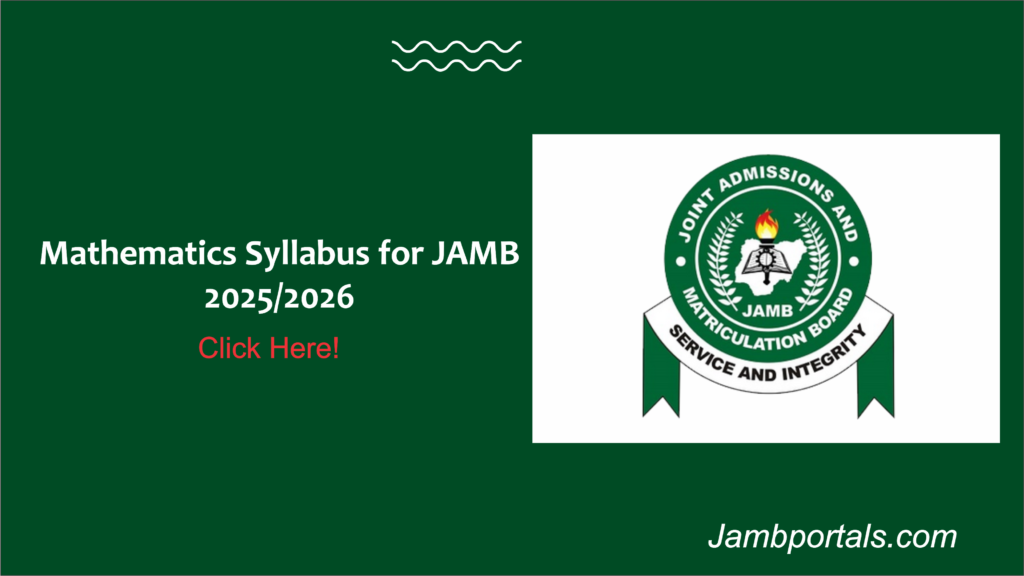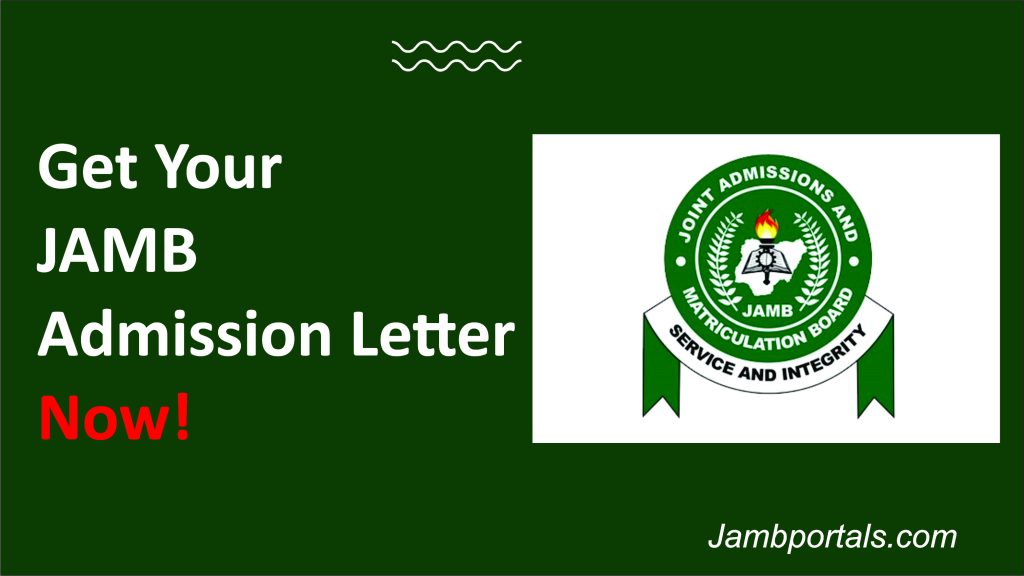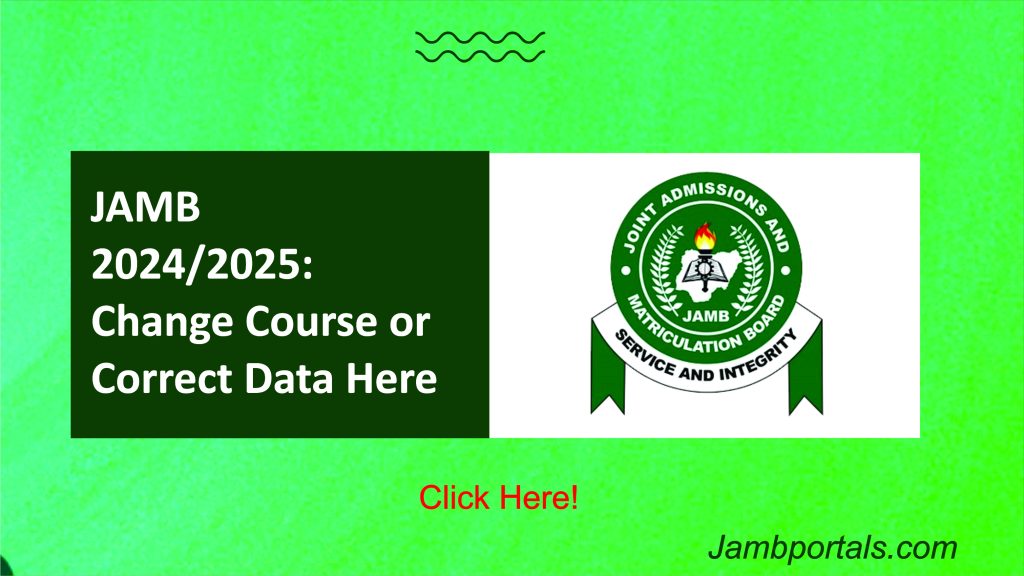
JAMB has released the official 2025 syllabus for Mathematics against the forthcoming Unified Tertiary Matriculation Examination (UTME). See more details below.
Syllabus Overview
| Examination Type | UTME / Direct Entry |
| Examination Year | 2025/2026 |
| Syllabus | Mathematics |
| File Format | |
| File Size | 256 KB |
The JAMB Mathematics Syllabus is structured into different sections, each corresponding to specific mathematical domains. These sections include: Number and Numeration, Algebra, Geometry, Trigonometry and Calculus.
Candidates are advised to use a variety of study resources, including textbooks, reference materials, and online resources aligned with the JAMB Mathematics Syllabus. Standard textbooks, mathematical texts, and reputable online platforms can enhance understanding.
Recommended: Free Download of the JAMB 2025/2026 Syllabus PDF: Syllabus System (IBASS)
However, it is important to note that Mathematics is not just about memorization; it involves practical problem solving. Candidates should engage in solving mathematical problems, working through examples, and understanding the step-by-step solutions.
General Objectives
- Acquire computational and manipulative skills;
- Develop precise, logical and formal reasoning skills;
- Develop deductive skills in interpretation of graphs, diagrams and data
- Apply mathematical concepts to resolve issues in daily living.
JAMB 2025 Syllabus for Mathematics
| TOPICS/CONTENTS/NOTES | OBJECTIVES |
|---|---|
| SECTION I: NUMBER AND NUMERATION 1. Number bases: (a) operations in different number bases from 2 to 10; (b) conversion from one base to another including fractional parts. | Candidates should be able to: i. perform four basic operations (x, +, -, ÷); ii. convert one base to another; iii. perform operations in modulo arithmetic. |
| 2. Fractions, Decimals, Approximations and Percentages: (a) fractions and decimals; (b) significant figures; (c) decimal places; (d) percentage errors; (e) simple interest; (f) profit and loss percent; (g) ratio, proportion and rate; (h) shares and valued added tax (VAT). | Candidates should be able to: i. perform basic operations (x, +, -, ÷) on fractions and decimals; ii. express to specified number of significant figures and decimal places; iii. calculate simple interest, profit and loss per cent; ratio proportion, rate and percentage error; iv. solve problems involving share and VAT. |
| 3. Indices, Logarithms and Surds: (a) laws of indices; (b) equations involving indices; (c) standard form; (d) laws of logarithm; (e) logarithm of any positive number to a given base; (f) change of bases in logarithm and application; (g) relationship between indices and logarithm; (h) Surds. | Candidates should be able to: i. apply the laws of indices in calculation; ii. establish the relationship between indices and logarithms in solving problems; iii. solve equations involving indices; iv. solve problems in different bases in logarithms; v. simplify and rationalize surds; vi. perform basic operations on surds. |
| 4. Sets: (a) types of sets (b) algebra of sets (c) Venn diagrams and their applications. | Candidates should be able to: i. identify types of sets, i.e. empty, universal, complements, subsets, finite, infinite and disjoint sets; ii. solve problems involving cardinality of sets; iv. iii. solve set problems using symbols; v. iv. use Venn diagrams to solve problems involving not more than 3 sets. |
| SECTION II: ALGEBRA 1. Polynomials: (a) change of subject of formula; (b) multiplication and division of polynomials; (c) factorization of polynomials of degree not exceeding 3; (d) roots of polynomials not exceeding degree 3; (e) factor and remainder theorems; (f) simultaneous equations including one linear one quadratic; (g) graphs of polynomials of degree not greater than 3. | Candidates should be able to: i. find the subject of the formula of a given equation; ii. apply factor and remainder theorem to factorize a given expression; iii. multiply, divide polynomials of degree not more than 3 and determine values of defined and undefined expression; iv. factorize by regrouping difference of two squares, perfect squares and cubic expressions; etc. v. solve simultaneous equations – one linear, one quadratic; vi. interpret graphs of polynomials including applications to maximum and minimum values. |
| 2. Variation: (a) direct; (b) inverse; (c) joint; (d) partial; (e) percentage increase and decrease | Candidates should be able to: i. solve problems involving direct, inverse, joint and partial variations; ii. solve problems on percentage increase and decrease in variation. |
| 3. Inequalities: (a) analytical and graphical solutions of linear inequalities; (b) quadratic inequalities with integral roots only. | Candidates should be able to: i. solve problems on linear and quadratic inequalities; ii. interpret graphs of inequalities. |
Download JAMB 2025 Syllabus for Mathematics
Click the button below to download the full 2025 Mathematics syllabus on your smartphone or laptop.


